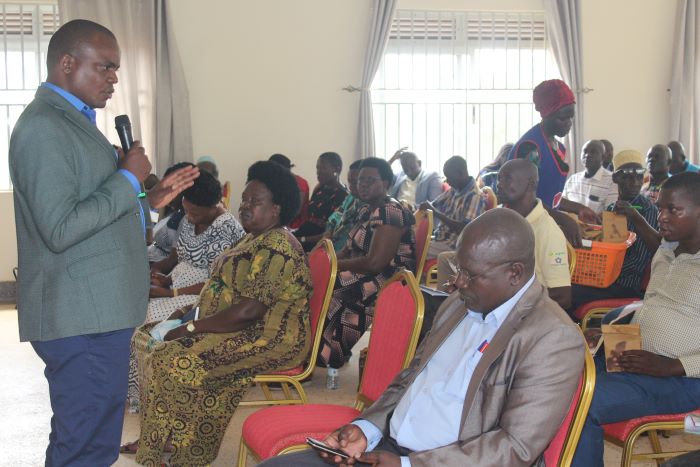KIRYANDONGO, February 16, 2024 – Kiryandongo district leaders have started a process to enact a quality ordinance aimed at improving the quality of maize and its by-products so that they are fit for both human and animal consumption.
This follows a recent report from the Uganda Bureau of Statistics [UBOS] and Kiryandongo District Production Office which revealed that poor post-harvest handling practices are contributing to 40 percent losses to the farmers on top of increasing aflatoxin levels in maize grains.
According to food scientists, aflatoxin is a naturally occurring toxin produced by the fungus Aspergillus flavus. The fungus can be recognised by a gray-green or yellow-green mold growing on corn kernels in the field or in storage. “Plant stress due to drought, heat or insect damage during fungus growth usually increases aflatoxin levels,” the experts say.
“Aflatoxin contamination reduces feeding value and hinder sales. Because it is extremely poisonous to warm-blooded animals even at relatively low levels, grain handling facilities often check for the presence of the toxin before purchasing corn.”
Sound agronomic practices and post-harvest practices must be followed to reduce or prevent aflatoxin buildup once the maize crop is harvested and stored, experts add.
The formulation of the maize quality ordinance in Kiryandongo district is meant to enforce good post-harvest handling among the farmers and other dealers who don’t care about the dangers of poor post-harvest handling.
According to Issa Hassan Byenkya, the District Production and Marketing Officer Kiryandongo, the biggest challenge in maize production is persistent mishandling of the maize grain along its value chain characterised by drying on bare ground, poor bagging and premature harvest, all facilitating the occurrence of aflatoxin in the grains, hence posing health risks to humans and animals.
“It is very important to ensure good quality maize so that we don’t compromise the health of consumers. You better starve than eating maize contaminated with aflatoxin. This will save you from suffering in future. Even animals should not be fed on contaminated with aflatoxin,” explained Byenkya during a recent meeting held at the district headquarters to formulate the maize quality ordinance.
While speaking at the same meeting, Edith Aliguma the Kiryandongo district LCV Chairperson emphasised the need for aflatoxin-free maize, saying it will improve the livelihoods of the people of Kiryandongo since it is the one on demand.
She said efforts to improve post-harvest handling of maize and other crops in the district are being supported under Agriculture Cluster Development Project [ACDP] which provided tarpaulins for drying the harvested grains. ACDP is being implemented countrywide by the Ministry of Agriculture, Animal Industry and Fisheries [MAAIF].
Aliguma decried the practice by the farmers to harvest immature maize cobs for drying so that they can earn quick money, saying this affects quality as it leads to the occurrence of aflatoxin in the grains.
On his part, Jonathan Akweteireho, the Deputy Resident District Commissioner Kiryandongo noted that South Sudan recently rejected Uganda’s maize at the border due to poor post-harvest handling favours the occurrence of aflatoxins in the grains.
“I commend the district leadership for coming up with the ordinance which will address maize quality. The ordinance will be a legal instrument to enforce quality maize production and deter schools from feeding the children on contaminated posho. Some schools do not mind the quality of posho they give to our children. Majority go for third grade posho because it is cheap hence threatening the health for our children,” said Akweteireho.
Kiryandongo produces 160,000 tonnes of maize per year and only 40 percent is consumed within the district.
Buy your copy of thecooperator magazine from one of our country-wide vending points or an e-copy on emag.thecooperator.news
